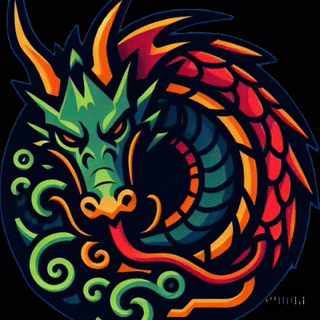The Hierarchy of Chinese Gods: A Comprehensive Guide
Introduction
The Chinese pantheon is one of the most intricate and enduring religious traditions in the world, shaped by millennia of Daoist, Buddhist, and Confucian influences. Unlike monotheistic traditions, Chinese religious beliefs accommodate a vast network of deities, immortals, and spirits, each with specific responsibilities and domains. This paper explores the hierarchical structure of Chinese deities, providing insight into their significance, functions, and interrelationships.
The Supreme Deity: The Jade Emperor
At the pinnacle of the celestial hierarchy is the Jade Emperor (Yù Huáng Dng D\u00agr), the ruler of heaven and the cosmos. Regarded as the divine sovereign overseeing all deities, spirits, and mortals, he functions similarly to a celestial emperor, reflecting Confucian ideals of governance. His authority is primarily administrative, ensuring cosmic order and balance.
Related Reading:
Schipper, Kristofer. The Taoist Body. University of California Press, 1993.
Wong, Eva. Taoism: An Essential Guide. Shambhala, 2011.
The Three Pure Ones: The Highest Daoist Deities
Above the Jade Emperor in Daoist cosmology are the Three Pure Ones (Sān Qīng), representing different aspects of the Dao:
Yuanshi Tianzun (Celestial Worthy of the Primordial Beginning) – The source of all existence.
Lingbao Tianzun (Celestial Worthy of Numinous Treasure) – Guardian of Daoist scriptures.
Daode Tianzun (Celestial Worthy of the Way and Its Virtue, or Laozi) – Associated with the Dao and its teachings.
These three are venerated more in religious Daoism than in popular worship, where the Jade Emperor holds greater prominence.
Related Reading:
Robinet, Isabelle. Taoist Meditation: The Mao-shan Tradition of Great Purity. SUNY Press, 1993.
The Four Heavenly Kings
The Four Heavenly Kings (Sì Dà Tiānwáng) are powerful Buddhist deities adapted into Chinese folklore. Each king governs a cardinal direction and protects the world from malevolent forces:
Virūdhaka (Zéngzhāng Tiānwáng) – South, symbolizing growth.
Dhṛtarāṁŕa (Guǒngmù Tiānwáng) – West, symbolizing vision.
Vaiśravaṇa (Duōwén Tiānwáng) – North, symbolizing wealth.
Virūpākṣa (Chíguó Tiānwáng) – East, symbolizing protection.
Related Reading:
Teiser, Stephen F. The Scripture on the Ten Kings. University of Hawaii Press, 1994.
The City God (Chenghuang)
One of the most widely revered deities in Chinese folk religion, the City God (Chénghuáng Shén), serves as a divine magistrate protecting a city and overseeing the spirits of the deceased. Each city traditionally has its own Chenghuang, reflecting localized governance akin to an earthly administration.
Related Reading:
Dean, Kenneth. Local Communal Religion in Contemporary South-East China. Princeton University Press, 1993.
Earth Gods and Household Deities
At the local level, numerous deities oversee the daily lives of individuals:
Tudi Gong (Earth God) – A guardian of land and communities, protecting households and local economies.
Zao Jun (Kitchen God) – Oversees domestic harmony and reports household affairs to the Jade Emperor annually.
Mazu (Goddess of the Sea) – Protects fishermen and sailors, worshipped throughout coastal China.
Related Reading:
Overmyer, Daniel L. Folk Buddhist Religion. Harvard University Press, 1976.
Conclusion
The Chinese pantheon is a complex, hierarchical system reflecting the cultural, religious, and philosophical values of Chinese civilization. The interactions between these deities mirror the structured bureaucratic system of imperial China, reinforcing the connection between governance and the divine. Further research may explore regional variations in deity worship and the ongoing evolution of these beliefs in contemporary Chinese society.
Suggested Resources for Further Research:
Daoist Studies Website: https://www.daoiststudies.org/
The Princeton Dictionary of Buddhism (Princeton University Press, 2013)
Journal of Chinese Religions (Routledge)
For scholarly articles, readers may consult databases such as JSTOR, Project MUSE, and Google Scholar for peer-reviewed studies on Chinese religious traditions.
480-366-3550 (Domain Sales)
© SDBEST LLC, 2025. All rights reserved.
Sponsorship Disclosure
Terms of Service
